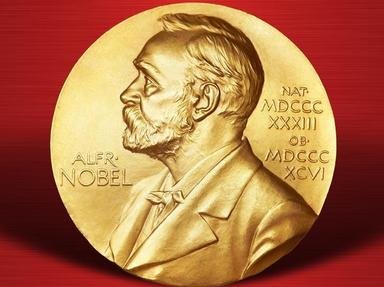Quiz Answer Key and Fun Facts
1. Camillo Golgi & Santiago Ramón y Cajal
2. Guglielmo Marconi & Karl Ferdinand Braun
3. Frederick Banting & John Macleod
4. Aristide Briand & Gustav Stresemann
5. Erwin Schrodinger & Paul Dirac
6. Irčne Joliot-Curie & Frédéric Joliot-Curie
7. Edwin McMillan & Glenn T. Seaborg
8. Shmuel Yosef Agnon & Nelly Sachs
9. Gerald Edelman & Rodney Porter
10. Anwar Sadat & Menachem Begin
11. Nelson Mandela & F.W. de Klerk
12. John Hume & David Trimble
Source: Author
wellenbrecher
This quiz was reviewed by FunTrivia editor
gtho4 before going online.
Any errors found in FunTrivia content are routinely corrected through our feedback system.
